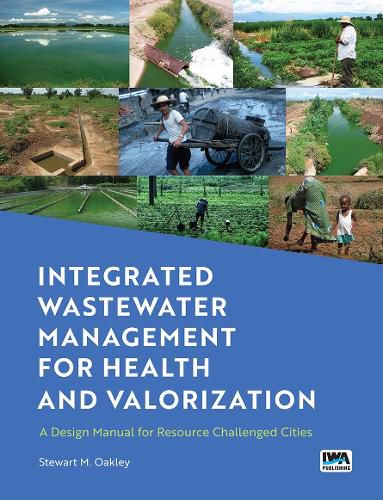Readings Newsletter
Become a Readings Member to make your shopping experience even easier.
Sign in or sign up for free!
You’re not far away from qualifying for FREE standard shipping within Australia
You’ve qualified for FREE standard shipping within Australia
The cart is loading…






Adequate wastewater treatment in low to medium income cities worldwide has largely been a failure despite decades of funding. The still dominant end-of-pipe paradigm of treatment for surface water discharge, focusing principally on removal of organic matter, has not addressed the well-published problems of pathogen and nutrient release with continued contamination of surface waters. This book incorporates the new paradigm of integrated wastewater management for valorization without surface water discharge using waste stabilization pond systems and wastewater reservoirs. In this paradigm the purpose of treatment is to protect health by reducing pathogens to produce an effluent that is valorized for its fertilizer and water value for agriculture and aquaculture. Methane production as a sustainable energy source is also considered for those applications where it is appropriate. Emphasis is on sustainable engineering solutions for low to medium income cities worldwide.
Chapters present the theory of design, followed by design procedures, example design problems, and case study examples with data, diagrams and photos of operating systems. Excel spreadsheets and the FAO program CLIMWAT/CROPWAT are included in examples throughout. Sections on engineering practice include technical training, operation and maintenance requirements, construction and sustainability. The book incorporates design and operating data and case studies from Africa, Australia, Latin America, Europe, New Zealand, and the US, including studies that have been published in French, Portuguese, and Spanish.
$9.00 standard shipping within Australia
FREE standard shipping within Australia for orders over $100.00
Express & International shipping calculated at checkout
Adequate wastewater treatment in low to medium income cities worldwide has largely been a failure despite decades of funding. The still dominant end-of-pipe paradigm of treatment for surface water discharge, focusing principally on removal of organic matter, has not addressed the well-published problems of pathogen and nutrient release with continued contamination of surface waters. This book incorporates the new paradigm of integrated wastewater management for valorization without surface water discharge using waste stabilization pond systems and wastewater reservoirs. In this paradigm the purpose of treatment is to protect health by reducing pathogens to produce an effluent that is valorized for its fertilizer and water value for agriculture and aquaculture. Methane production as a sustainable energy source is also considered for those applications where it is appropriate. Emphasis is on sustainable engineering solutions for low to medium income cities worldwide.
Chapters present the theory of design, followed by design procedures, example design problems, and case study examples with data, diagrams and photos of operating systems. Excel spreadsheets and the FAO program CLIMWAT/CROPWAT are included in examples throughout. Sections on engineering practice include technical training, operation and maintenance requirements, construction and sustainability. The book incorporates design and operating data and case studies from Africa, Australia, Latin America, Europe, New Zealand, and the US, including studies that have been published in French, Portuguese, and Spanish.